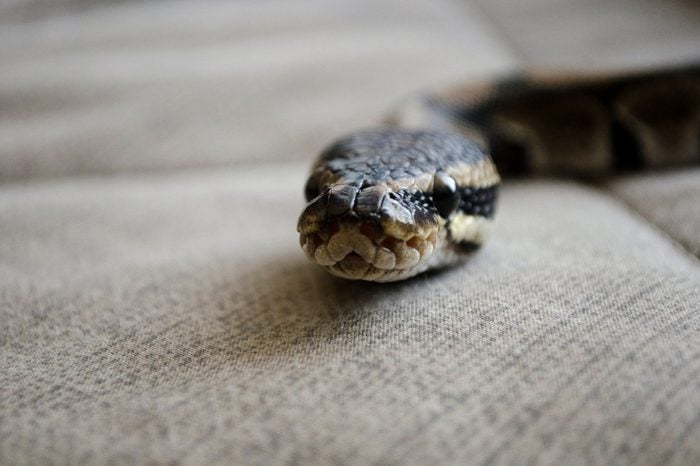
People generally don’t like to talk about snakes. “Most people are afraid of them,” says David Mizejewski, a naturalist with the National Wildlife Federation in Washington D.C. That doesn’t mean we’re not fascinated by stories about snakes showing up in unexpected places, like in a restaurant or someone’s bathroom—preferably not ours.
“Snakes are wrapped into all this mystique and perceived danger,” says Carl Barden, director of the Reptile Discovery Center in Deland, Florida. “And there are some good reasons for that. But snakes are in fact incredibly shy.” The overriding reason we encounter snakes is that, just like bees and chipmunks, they’re part of nature. “They’re just out there, doing their business, trying to survive,” Mizejewski says. But if provoked, their bites can be serious business. Here are some more reasons why snakes might be out and about.
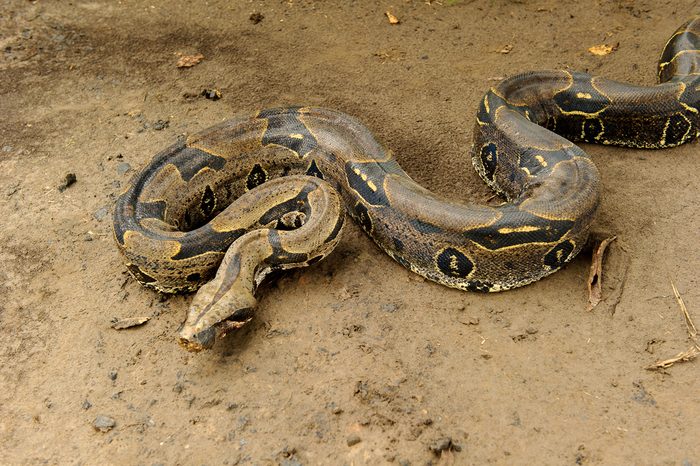
More people are keeping snakes as pets
Over the past 30 years or so, captive reptiles have become commonplace. Millions of homes in America now host a bearded dragon, leopard gecko, or a boa constrictor. “When they’re kept properly and responsibly, they’re no more dangerous than anything else with the potential to really do damage,” Barden says. The problem is, people can get in over their heads caring for an exotic animal. “A lot of people think, ‘Oh, I’m doing the right thing. I’m going to set it free,’” says Mizejewski says. “Unfortunately, that’s not the right thing to do.” In rare cases, non-native species can become invasive.
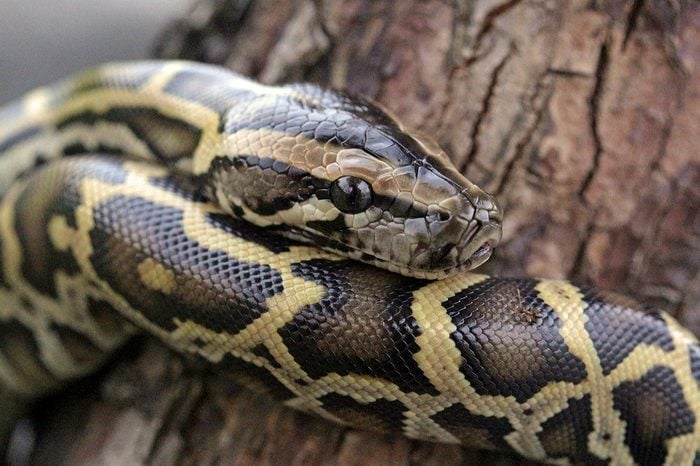
They’ve set up camp in Florida
Burmese pythons aren’t native to the Everglades, but some are basking in the Sunshine State—so many, in fact, that Florida imported trained snake hunters from India to reduce the population. So how did snakes from Southeast Asia wind up in alligator country? Conservationists think a breeding facility in South Florida was destroyed in Hurricane Andrew in 1992, allowing the snakes to escape. “They’re not anything particularly dangerous for people, as long as you leave them alone,” Mizejewski says. “But for the wildlife, it’s going to be a big problem.”
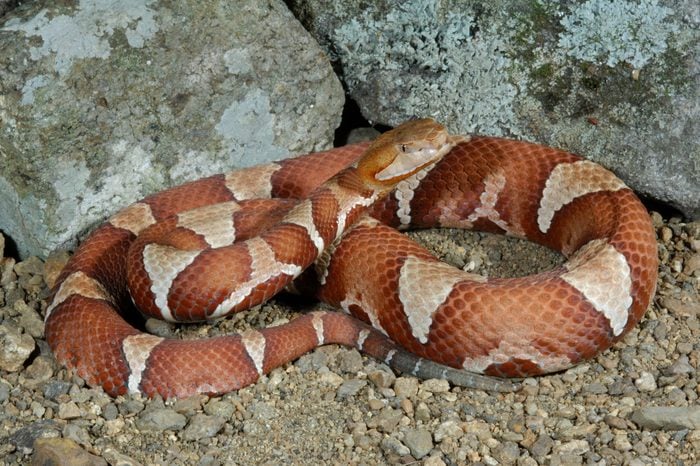
Snakes do sometimes wander out of their natural habitat
Very occasionally, reptiles do show up in weird places. “That’s just the reality of the world we live in,” Mizejewski says. Take the case of the woman who was bitten by a copperhead as she walked into a Longhorn Steakhouse in Virginia. According to CBS News, the woman experienced excruciating pain and swelling from her foot to her up to her hips from the venomous bites. The chances of these types of encounters are small though, Mizejewski says. About 7,000 to 8,000 people are bitten by venomous snakes in the United States each year, the Centers for Disease Control and Prevention estimates, resulting in about five deaths.
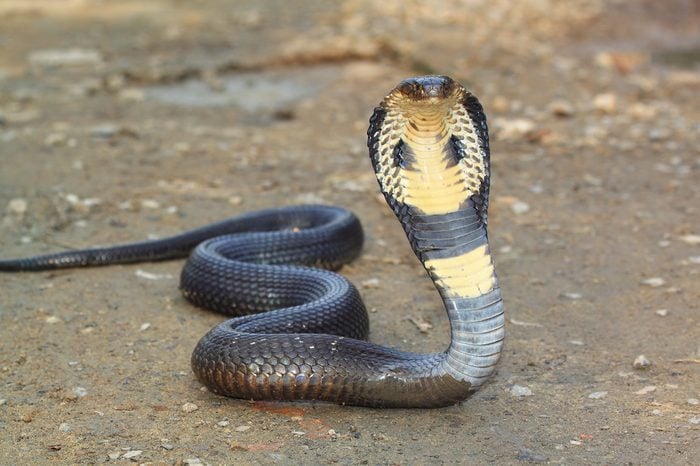
It seems like it because of social media
Now that almost everyone has a phone with video and social media in their pocket, an unusual encounter with a snake is much more likely to blow up. “A snake shows up in a toilet bowl, and it goes viral,” Mizejewski says. This recently happened on a ranch in Texas. The truth is that even the most dangerous species of snakes in the world—think King cobras—are remarkably shy unless they’re provoked, Barden says. “Most of the time he’s thinking, ‘uh oh, look at this giant person. I certainly don’t want anything to do with that, where can I hide to get away from it?’” Should you encounter a snake unexpectedly, Barden recommends you take some steps back and leave the snake alone. If the snake is inside your home, you should contact your local animal control.
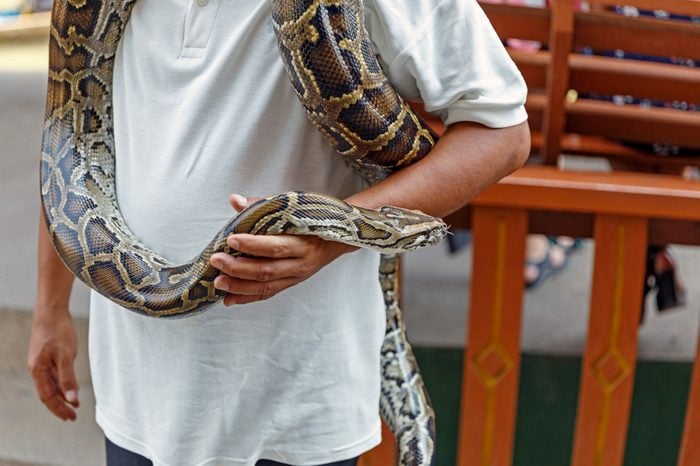
Snakes respond when provoked
Snakes also make headlines when people do unwise things, such as the Arizona man who attempted to barbeque a rattlesnake and got bitten in the face. “It should go without saying that a venomous snake is a potentially dangerous animal,” Mizejewski says. “Handling dangerous animals is a dangerous activity. If you are injured when you do it, it’s kind of your fault—especially if you are doing it to earn cool points and you get bitten on the face.” Snake bites are classified into two categories: legitimate and illegitimate. Legitimate is when a person unintentionally provokes a snake—stepping on it by mistake, for example. An illegitimate bite takes place when a person tries to catch, kill, or otherwise interact with a snake and gets bitten. (In other words, avoid selfies with snakes in the wild.) According to a study of 332 snake bites from Wilderness and Environmental Medicine, about 70 percent of the bites analyzed were legitimate.
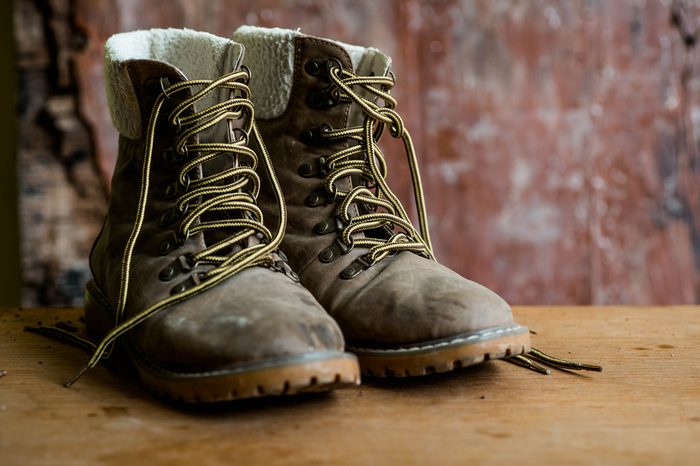
It’s nice out
Comfortable temperatures for people often mean comfortable temperatures for reptiles. Snakes are cold-blooded, which means they don’t generate their own body heat and are reliant on the outside air temperature to keep warm. “When it’s 80 degrees outside and sunny, you are more likely to see a snake then when it’s 40 degrees and overcast,” Barden says. That’s why you see more snake bites in states like Florida, Texas, and Arizona, than in New York and Vermont. And in most parts of the country, snakes go dormant in the winter. If you’re worried about snakes, take the time to research what wildlife you could encounter in your area before you go out into the wilderness. Wear good hiking boots, avoid high grasses where you can’t see where you’re stepping, and don’t put your hands in any holes.
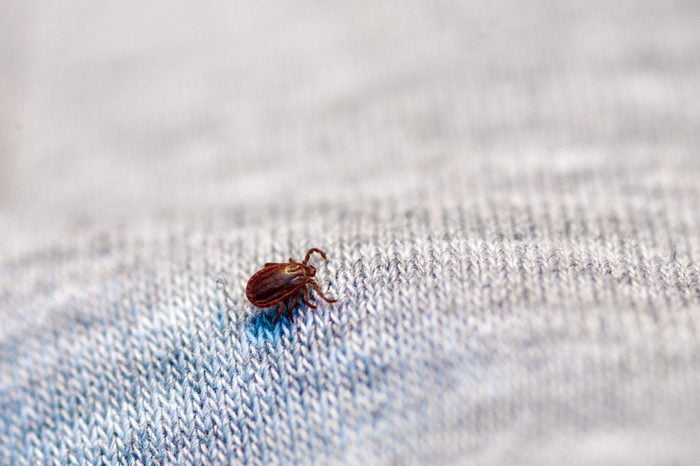
Snakes play an essential role in nature
Even if snakes give you the shivers, they’re an important part of the ecosystem and are beneficial to humans. For example, rodent-loving rattlesnakes can eat from 2,500 to 4,500 ticks per year, helping the fight against Lyme disease, according to research from the University of Maryland. And as ferocious as you may think snakes are, they’re facing their own challenges as a species. Over the past few years, a condition known as snake fungal disease has been wiping out snake populations around the globe, Mizejewski says.
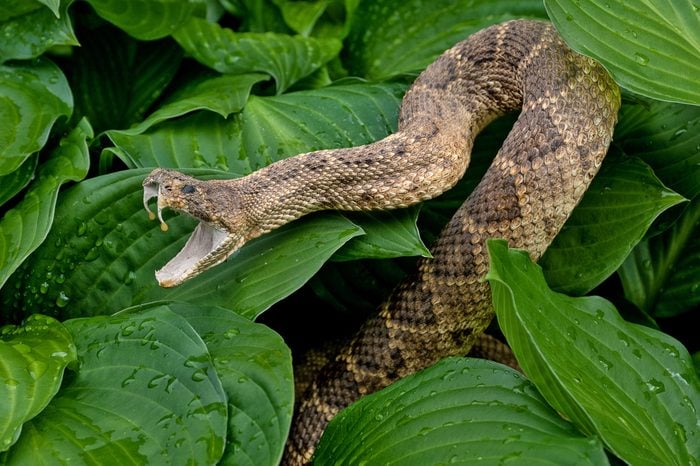
They’re adept at self-defense
Even if deaths from snake bites are rare, there’s no question that they can wreak havoc on your body if the snake is venomous. Snake venoms are a complex mixture of protein and enzymes that can result in shock, irregular heartbeat and breathing, hemorrhaging, or kidney failure. And some venoms affect several systems at once. If you or someone else gets bitten by a snake, get to a medical facility as soon as possible for an anti-venom, the only proven treatment for snake bites. “The sooner you’re getting the serum, the better your snake event should be, because the anti-venom neutralizes the snake venom in your bloodstream before those proteins get a chance to do damage,” Mizejewski says. That said, about 85 percent of snakes species are non-venomous—though their bites can still hurt. And some—like pythons—kill their prey by constriction. Next, find out the strangest animal found in each state.